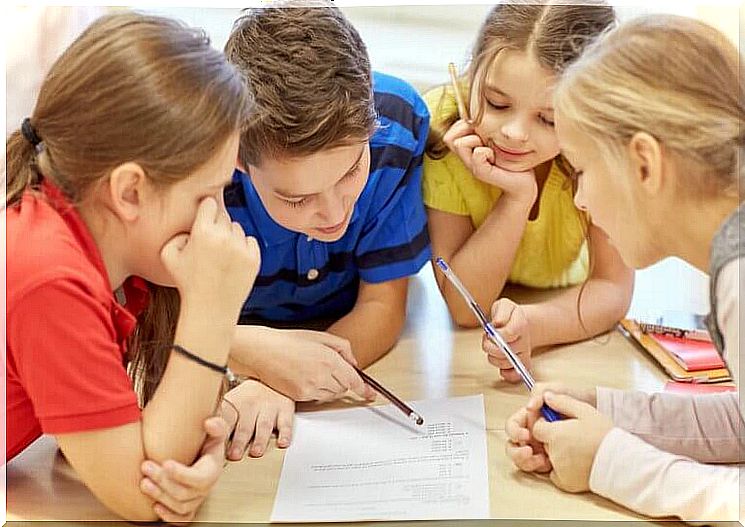How To Teach And Learn To Think?

Traditional education is based on a systematic and mechanical learning process in which memorization bears the main weight. There are many studies today that support a different way of teaching. Learning to think is one of the main objectives of this educational revolution that we are witnessing little by little.
The aim is to provide students with the tools to search for information and to assimilate it critically. We need to change processes and prepare students so that they can effectively solve problems and make decisions based on good analysis in the future.
Teaching to think involves making good reasoning permeate everything we do in the classroom. Young people will thus be able to become good thinkers and will not be limited to memorizing information.

Why teach and learn to think?
Most schools do not have an educational model that teaches how to use reflection. The traditional school continues to be imbued with short-term tools, methods and techniques. She teaches students to solve equations and memorize texts that will probably go into the Oblivion Drawer after a few days without leaving a trace.
Many education professionals bet on methodologies that focus on understanding, on the value of questions over answers, by creating new ways of solving problems through reflection. To achieve this, we must also renew the procedures and the tools.
What is thought-based learning?
Many educational institutions are now taking a step forward. They recognize that the traditional methodology focuses on learning by repetition and has very little intrinsic meaning. This teaching model is ineffective because it does not put critical and reflective thinking into practice.
Thought-based learning provides more conscious and deep learning that changes the way a student deals with new information. Robert Swartz, the creator of this method, is one of the most influential figures in the field of education.
He defines the latter as a methodology that teaches thinking creatively and critically. He explains that this methodology originated after he attended a history teacher’s class in Boston.
The latter had invited his students to confront two stories. Swartz then realized that children were learning to decide if what they were reading was true and reliable. He concluded that this perspective could apply to anything.
This active methodology goes beyond content. It ensures that students learn to think and have the opportunity to solve real world problems using this content, considering the different options and looking for the best solution. The learning process does not depend on memorization, but on the internalization of content.
Learning to Think: Collaborative Thinking in the Classroom
Learning to think in the classroom requires the teacher to be a facilitator and guide student teams to solve problems, cases and projects together. The active participation of students is therefore encouraged.
Group work is crucial in classrooms that teach thinking, because all thinking works best when it is collaborative. Reflecting on important issues with others requires teamwork, a way of collaborating with others that strengthens open-mindedness and reflection.
The importance of questions in learning to think
Dialogue is an invaluable resource for generating knowledge. From the 5th century BC, Socrates warned of its usefulness and devised a whole method: maieutics.
The Socratic Method includes the use of questions as a way to develop thinking. The questions we ask in class prompt students to try to answer and / or ask new questions.
Questions allow students to increase their ability to structure their ideas, to synthesize their answers and to defend them through reasoning. They thus increase their degree of autonomy in unknown fields. In this sense, a good teacher knows the types of questions and knows which ones are most appropriate for each situation.

Six hats for thinking
The Six Thinking Hats refer to a technique created by Edward De Bono to help solve or analyze problems from different points of view. It promotes and stimulates lateral and creative thinking. It encourages parallel thinking and is an alternative to traditional reasoning.
The six hats represent six ways of thinking. Each hat has a color that represents the thought directions we can use when faced with a problem. Each participant therefore imagine putting on and taking off a hat to indicate the type of thought they are using.










